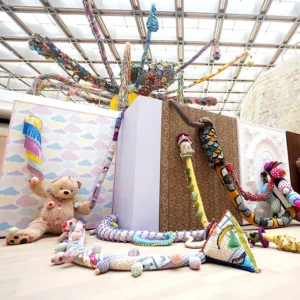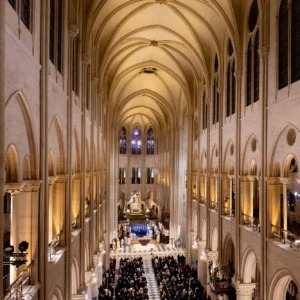Engadin at Hauser & Wirth St. Moritz showcases Jean-Michel Basquiat’s fascination with the Alpine lifestyle, including his enjoyment of cross-country skiing and local agricultural shows. His time in Switzerland, which included fifteen visits, provided a stark contrast to his life in New York.
The exhibition delves Basquiat’s unique relationship with the Swiss Alps, which began in 1982, highlighting his experiences as an “exotic” figure in Switzerland. It explores how the Alpine landscape influenced his work, blending Swiss cultural elements with his New York experiences.
Special attention is given to his visits to see his dealer, Bruno Bischofberger, in the Swiss Alps. Curated by Dieter Buchhart, a renowned Basquiat scholar, this loans-based show also sets the stage for future investigations into Basquiat’s connections to Italy, especially Rome and Florence.
The show features Jean-Michel Basquiat’s monumental work The Dutch Settlers (1982) alongside more playful pieces like Skifahrer (Skier) and See (Lake), created during his visits to Switzerland.
In The Dutch Settlers, Basquiat explores themes of historical exploitation (“TOBACCO”), the origins of African civilization (“NUBIA”), and religious motifs (“SAMSON”), while also referencing an ibex, the iconic megafauna of Switzerland’s Engadin region. This nine-panel painting is a highlight of the exhibit.
The Engadin series underscores Basquiat’s collaborative spirit, sparked during his 1983/1984 visit to St. Moritz. While there with the Bischofbergers, discussions began for a collaboration between Basquiat, Andy Warhol, and Francesco Clemente. Each artist created four paintings and a drawing, which were exchanged for completion.
Another notable piece, In Bianco (In White) (1984), showcases the dynamic interplay between the three artists on a single canvas. Another lesser-known collaboration features Basquiat and Bischofberger’s three-year-old daughter, Cora, capturing the joy in Basquiat’s work, which he often attributed to the influence of children’s art.
In Big Snow (1984), Basquiat links the Swiss natural landscape to the 1938 Berlin Summer Olympics, where Jesse Owens’ victories were overshadowed by Hitler’s refusal to acknowledge his four gold medals.
The exhibition also showcases Basquiat’s 1986 series To Repel Ghosts, created during his time in Zurich and St. Moritz. Inspired by a conversation with Claudio Caratsch, an ambassador to four African countries, the works explore themes of emptiness and spirituality, particularly in relation to the African Diaspora.
Curator Dieter Buchhart reflects that the Engadin region was a place for Basquiat where he could find a balance of work, inspiration, friendship, and relaxation all at once.
The exhibition is on view through March 29, 2025.





